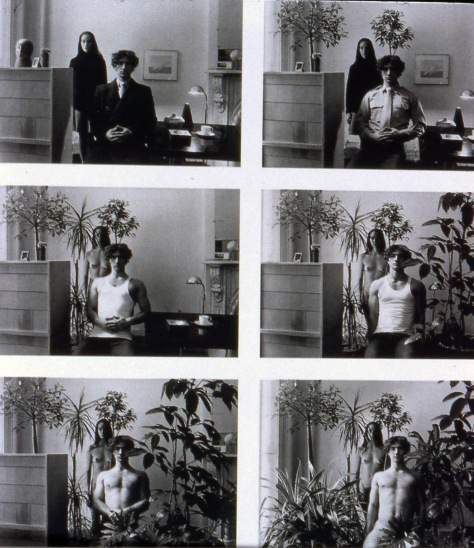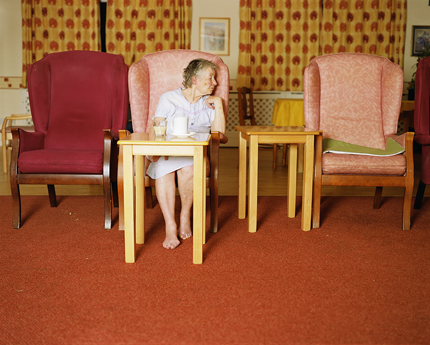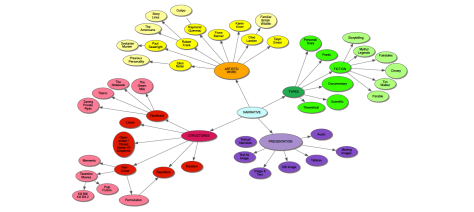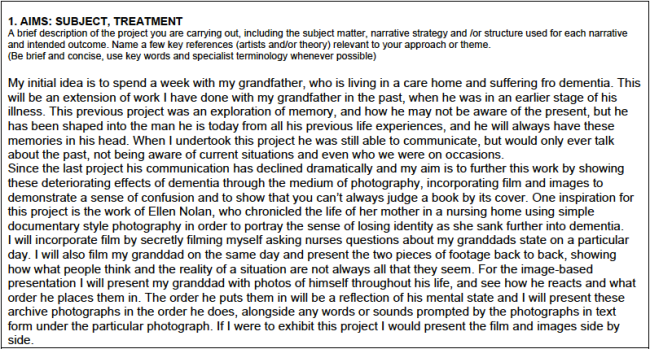Today I had a tutorial with Ellen Nolan. It was reassuring to hear that she thought my idea was good and that there was nothing needing to be changed at this stage.
Monthly Archives: January 2014
Narrative Project Proposal 16/1/14
Duane Michals- Paradise Regained Analysis 15/1/14

A sequence of silver prints by Duane Michals, entitled Paradise Regained
The sequence tells a narrative story of a regression of evolution, transitioning from an artificial office environment to a natural area full of plants and nothing man made.
The subjects becoming less clothed throughout as the environment changes reminds the viewer that humans are part of the earth and as susceptible to changes as everything else on the planet.
The sequence contains biblical connotations, thanks to the Adam and Eve style figures. As it regresses to the first image the sequence could be seen as stripping back the effects of religion.
The figures are shot from the viewer’s eye line, making it easy to relate to them as it puts us in the same position as them.
The images challenge the dominant ideology of male superiority, with the woman standing tall behind the man.
Shot in black and white to further emphasis the stripping back of technology.
The title, Paradise Regained suggests that Michals has disdain for the modern way of life and sees the old way as preferable.
Ellen Nolan- Previous Personality Analysis 15/1/14

This photograph is by Ellen Nolan from her series Previous Personality.
The series follows Ellen’s mother as she struggles with dementia. The title Previous Personality is a reference to the way that dementia robs a person of their identity.
The subject is the only figure in the image, showing the sense of isolation that sufferers of the illness, and residents of a care home feel.
There are a lot of parallel lines, both vertically and horizontally. The abundance of vertical lines is almost reminiscent of bars, suggesting being locked into the illness.
The subject is looking longingly at the empty chair to her left, suggesting a longing for company she would have had previously in her life.
The colour scheme is very autumnal, a season associated with things coming to an end.
Flash is used, which is effective as it exemplifies the feeling of isolation by highlighting every aspect of the frame.
The picture is taken from the same height as the subject, negating any sense of superiority or inferiority. This shows how sufferers of dementia are still people despite their illness.
The photograph seems to have been shot in large format, so that if printed it could be large, further emphasising the empty portions of the frame, heightening the sense of isolation. It could also be made life size to present the reality of the situation.
Narrative Mind Map 14/1/14

Here is a mind map of things associated with the term ‘Narrative’
Initial Idea 13/1/14
My initial idea is to further a previously undertaken work involving my granddad, who is suffering from dementia.
Since this previous project his condition has worsened, and I want to show these degenerative effects through the medium of photography and film.
I want to employ documentary style filming of events in his care home to offer a realistic insight into the day-to-day existence of someone suffering from this illness.
Since the last project my granddads ability to communicate has diminished dramatically, but I still want to include his point of view of things in some way.
For the image-based aspect of the project I may take documentary shots as well as the filming. In the last project I incorporated archival photographs, as this was a great way to show dementias links with memory, so I may use these again combined with the newer material.
I know that Ellen Nolan has undertaken a project with a similar theme and aim to mine, so I intend to look at this work and see how she handled the subject. I will also look at various narrative photographers, so I have a good basic understanding of narrative photographic techniques and methods and hopefully get some inspiration for interesting ways to present my work.
Narrative : Project Brief 11/1/14
You are asked to construct two significantly different ‘narratives’ on a single theme or subject of your choice. Your approach could embrace any genre – documentary, fictional, fantastical or conceptual. The first narrative must be screen based (slideshow, video, ebook, blog), the second a printed publication (folder, newspaper, small book, set of postcards etc..)
In this module you will learn how to guide the viewer to the conclusion you want, be it truth, fiction or nonsense. We want you to consider
· How the meaning of one image can be affected by another, whether it is adjacent, in a sequence or combined with text.
· How the context in which images are seen affects their meaning. This means you will need to define/describe this context.
· How different types of narrative are constructed (linear, random, fragmented, flashback, tableau,…)
. How the aesthetic of the image – its mise en scene, influences meaning (lighting, composition, format, point of view, viewpoint, color…)
. How the addition of text, or spatial devices (blank pages, movement, sound) can influence meaning.
You will submit for assessment
– RDB; sketchbooks and an online research blog
– Two different “visual stories” in two formats
– One in digital form submitted for the formative review on a cd or dvd (max file size 100MB). You will have the opportunity to improve it according to feedback for final assessment. It can be a slideshow, single screen projection, ebook, pdf with 3 or more tableau images)
– One in printed form submitted for the summative review as a bound publication; booklet, newspaper, magazine, (max 20 pages, stapled, spiral bound, hand stitched, folder, ring binder, print on demand).
This is the brief we have been given for our narrative project. Usually when I am given a brief I can come up with some sort of idea to work from and develop, but for some reason I am so far struggling to come up with any interesting ideas for this project. Hopefully after some research of artists and other narrative works I will find some inspiration to get started with the project.
Narrative Introductive Lectures: Day 2 10/1/14
Narrative Introduction Lecture : 9/1/14
Today had our introductory lecture with Emmanuelle Waeckerle, David Rule and Ellen Nolan. Both Emmanuelle and David gave lectures on what was needed within this unit and also gave presentations on photographers and artists that link with the unit and could help towards are research.
I had recorded this, however the blog doesn’t seem to want to upload the file, instead here are photos of my notes that i took.
First Post …
Today I started up my blog. On this blog i will aim to post at least thing a day along side other work towards my ‘Narrative’ unit.
Starting today, I wanted to get a clear definition of what the word ‘narrative’ means so i went to a dictionary and looked it up.
In the ‘Oxford Advanced Learner’s Dictionary (7th edition)‘ it says: Narrative- noun (formal) 1 [C] A description of events, especially in a novel SYN STORY: a gripping narrative of their journey up the Amazon. 2 [U] The act, process or skill of telling a story: The novel contains too muh dialogue and not enough narrative.
I decided to then have a look through a thesaurus to see what words have a similar meanings to ‘narrative’ to see if would push forward my thoughts on what may be expected for this project.
In ‘The New Oxford Thesaurus of English (2000)‘ it says: Narrative > noun a chronological narrative of starks life. ACCOUNT, story, tale, chronicle, history, description, record, portrayal, sketch, portrait, statement, report, rehearsal, recital, rendering.
From this I have taken assumption that what we needed to do for this unit is to create a collection of images that project some sort of story through the way they are presented and their theme along with an RDB to show our workings.








